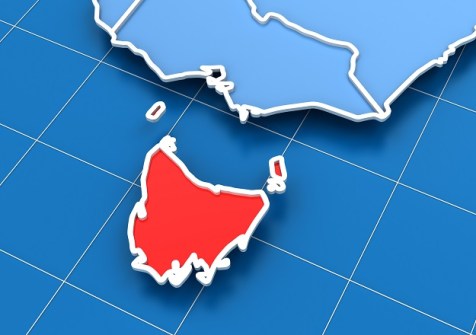
Tasmania has a new strategy for rolling out and enhancing a state-wide geospatial ecosystem, intended to set the direction for investment and collaboration.
The Tasmanian Spatial Information Council (TASSIC) Strategic Plan 2025–2028 was launched by Nick Duigan, Tasmania’s Minister for Parks, at the State of GIS Seminar in Hobart on 14 May.
The Minister said the Tasmanian Government recognises the importance of geospatial information and how vital this sector is to the lives of the community.
“It was great to be able to launch the new Tasmanian Spatial Information Council’s (TASSIC) new Strategic Plan 2025-2028 at the event,” Minister Duigan said.
“Trusted, robust and authoritative spatial information is a critical enabler for economic activity, societal wellbeing, and policy implementation across many sectors, including health, education, emergency management, agriculture, energy, tourism, and infrastructure.”
The Strategy outlines nine ‘pillars’ that “represent long-term priorities that address sector-wide needs and opportunities”. They include:
- Increased policy relevance. Government agencies will integrate spatial intelligence into policy and planning by leveraging TASSIC’s expertise as a trusted advisor.
- Stabilised spatial infrastructure funding. Decision-makers will advocate for stable, long-term funding for spatial data infrastructure, capabilities and maintenance.
- Build spatial skills pipelines. Universities and training providers will develop stronger spatial skills pipelines by collaborating with industry to align curriculum with workforce needs.
- Balanced voice in policy. Industry leaders will coordinate efforts to present a balanced and unified voice in policy discussions to enhance influence and sector growth.
- Foundations for commercial growth. Investors and businesses will recognise Tasmania as a hub for spatial innovation leading to increased funding and commercial opportunities.
- Spatial embedded in digital. State and local governments will embed spatial intelligence in digital transformation initiatives improving decision-making in infrastructure, transport, and smart cities.
The Minister said that the a “key component” of the Strategy is the ambition to influence sectors that are yet to realise the full capabilities of mature geospatial information.
“I have witnessed first-hand the incredibly important role that spatial information plays in supporting Tasmania’s response to natural disasters,” he said.
“These are foundation systems for the delivery and management of spatial information in Tasmania which further strengthens our links with the digital economy.”
The Minister cited the Tasmanian Government’s commitment of $2.75 million to deliver increased capability for the Land Information System Tasmania (LIST).
“This project is underway and I look forward to seeing the delivery of the modernisation and major uplift to the LIST and the Common Operating Platform.”






